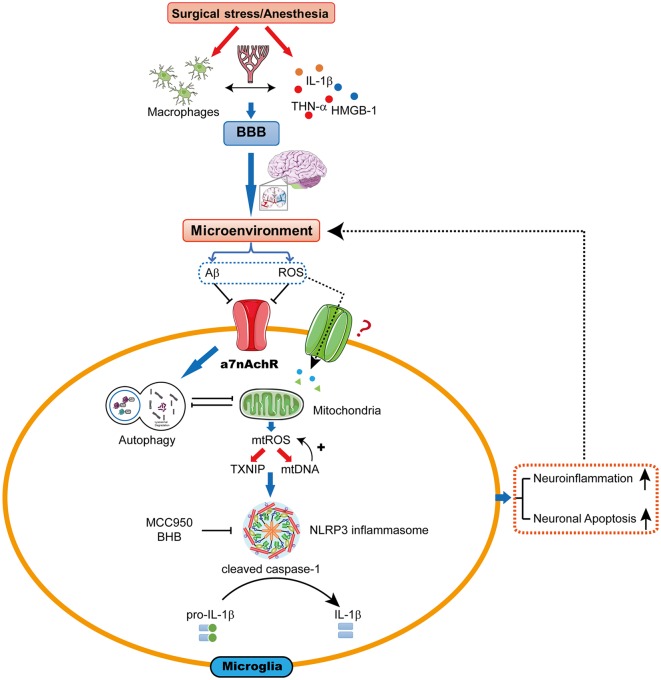Figure 1.
The proposed biological mechanisms for microglia mitochondrial reactive oxygen species (mtROS)/nod-like receptor pyrin domain-containing 3 (NLRP3) inflammasome-induced interleukin-1β (IL-1β) activation in the hippocampus leading to cognitive dysfunction following surgery and anesthesia. Surgical stress and anesthesia, through mechanisms that include inhibition of α7 nicotinic acetylcholine receptor (α7nAChR)-induced cholinergic anti-inflammatory pathway and autophagy, result in mitochondrial damage. The damaged mitochondria overproduce the superoxide anion, which escape the mitochondria to undergo a series of reactions to form mtROS. mtROS overproduction is sensed by TRX-interaction protein (TXNIP) or mitochondrial DNA (mtDNA), which bind to the leucine-rich repeat region of NLRP3 and lead to NLRP3 inflammasome activation. Consequently, the microglia is activated, which further promotes neuroinflammation and induces neuronal apoptosis, contributing to cognitive dysfunction.

